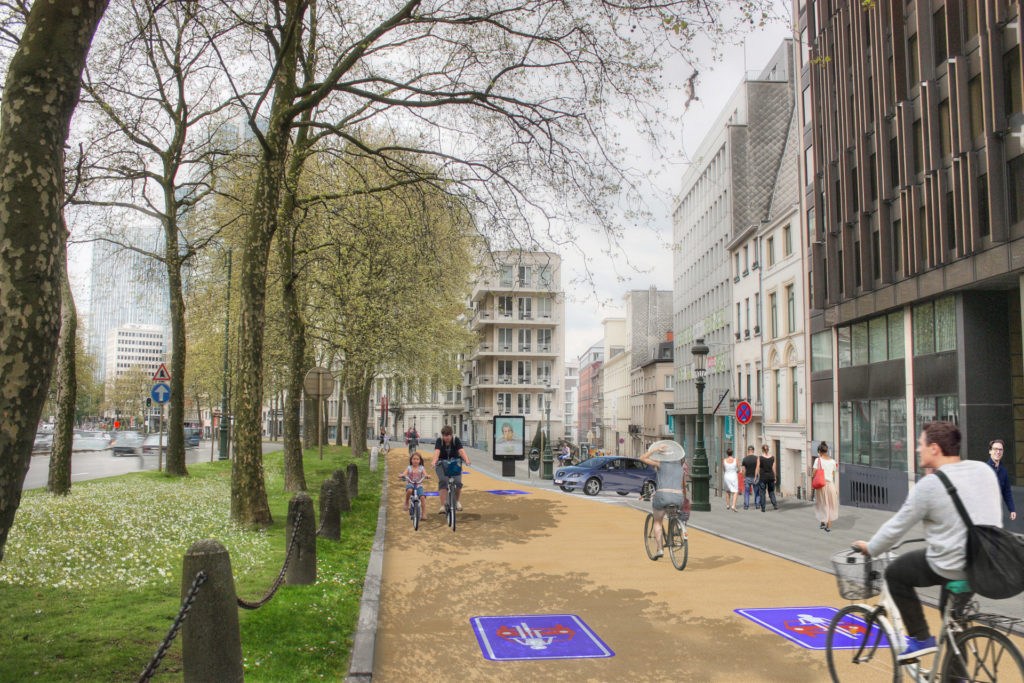Another section of Brussels' ongoing development of cycling infrastructure around the small ring road has officially been completed, according to a tweet by Brussels Mobility Minister Elke Van den Brandt.
This project - part of a wider push to redesign the pedestrian area alongside Brussels' small ring road - aims to improve the quality of life, with specific attention paid to pedestrians and cyclists, according to State Secretary for Urban Development Pascal Smet.
? Another piece completed. Enjoy a sunny ride between Madou and Arts/Loi ??#brusselschanges #NewBikelaneDay @SmetPascal @BartDhondt @PhilippeClose pic.twitter.com/NcXgBMACoB
— Elke Van den Brandt (@elkevdbrandt) May 28, 2021
"Thanks to a much clearer traffic situation, the circulation of transit traffic on the main road and in the tunnels will improve," Smet added in a statement.
A new part of the separate bicycle path on the Brussels Small Ring between Madou and Arts Loi has been finished. Our work continues. ?? ? https://t.co/TwY2i8EhgT ? @rudivervoort @elkevdbrandt pic.twitter.com/0d77fqLkZm
— Pascal Smet (@SmetPascal) May 28, 2021
The final permit for the so-called inner ring project was obtained in 2018, and focuses on the section between Boulevard du Jardin Botanique and Place Quetelet. Currently, works are underway on the area, with sections already completed.
"It is not only a historic urban development project in Brussels, it is also a symbolic one because the inner ring was the perfect example of a city that was entirely dedicated to cars. This project is a definitive ending of this car-centred city planning and a beginning of a new Brussels. A Brussels for people," Smet added.
A history of cycling
Brussels' move back towards cycling harks to a time before the popularity of cars, with records showing a tenfold increase in the number of bikes in the city between 1905 and 1935. By 1940, there were five times as many bicycles in the former province of Brabant (which included Brussels) as there were cars in the whole country.
Related News
- After 100 years in the industry, what does Shimano see for the future of cycling in Belgium and beyond?
- International electric bike race ‘The Sun Trip’ to start in Brussels this year
- Kayaks, bikes and gardens: Namur unveils 22 new city projects
The second half of the 20th century saw a gradual decline in cycling alongside the rise of the car, but the popularity is starting to decrease in the city.
According to a 2020 study Brussels has seen a boost in cycle among residents and commuters as the city continues to see growth in the number of cyclists spurred on by uncertainties associated with the use of public transport in times of pandemic.
Between 2013 and 2019, the number of cyclists passing through counting points more than doubled, with an average annual growth rate of 14%.
Since the first national mobility survey in 1999, the various surveys agree on the fact that cycling has increased, both as a proportion of the population that uses it and as a proportion of trips.

